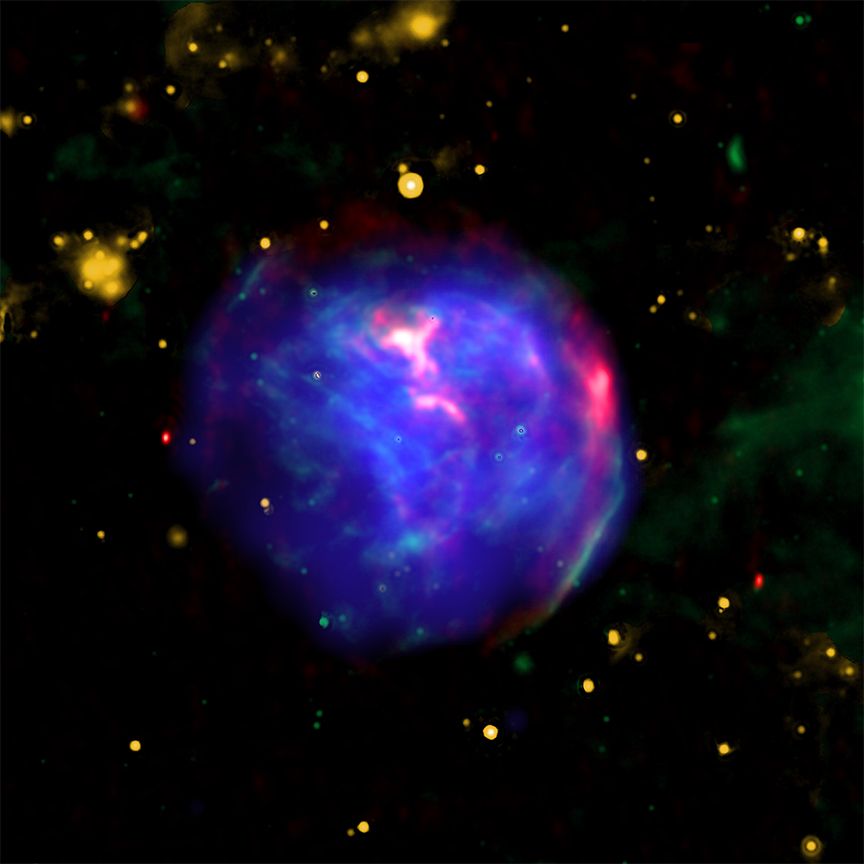Giant space bubble reveals reverse shockwaves from a catastrophic star explosion
By Samantha Mathewson about 20 hours ago
This delicate, colorful bubble in space hides the remains of a supernova.
NASA telescopes have captured the colorful blast of a stellar explosion thousands of years ago, shedding new light on the evolution of such cosmic remains.
When a star reaches the end of its life, it explodes in a bright burst called a supernova. White dwarfs are the dim, fading corpses of stars that have exhausted most of their nuclear fuel and shed their outer layers. Having shrunk to a relatively small size, white dwarfs are considered among the most stable of stars, given they can last for billions or even trillions of years.
However, when a white dwarf passes near a neighboring star it may siphon too much material from its companion, causing it to grow unstable and explode, resulting in a Type Ia supernova. That is the case of a stellar remnant — formally known as G344.7-0.1 — that is located roughly 19,600 light-years from Earth, and believed to be between 3,000 and 6,000 years old, according to a statement from NASA's Chandra X-ray Observatory.

Supernova remnant G344.7-0.1, located 19,600 light years from Earth, is the result of a white dwarf stellar explosion that occurred between 3,000 and 6,000 years ago. (Image credit: X-ray: NASA/CXC/Tokyo Univ. of Science/K. Fukushima, et al.; IR: NASA/JPL/Spitzer; Radio: CSIRO/ATNF/ATCA)
A new composite image captures views of the stellar remnant in X-ray, infrared and radio wavelengths. Data from NASA's Chandra X-ray Observatory and Spitzer Space Telescope, along with the National Science Foundation's Very Large Array and the Australia Telescope Compact Array, was used to create the detailed image.
More:
https://www.space.com/supernova-space-bubble-reveals-reverse-shock-waves-photo
